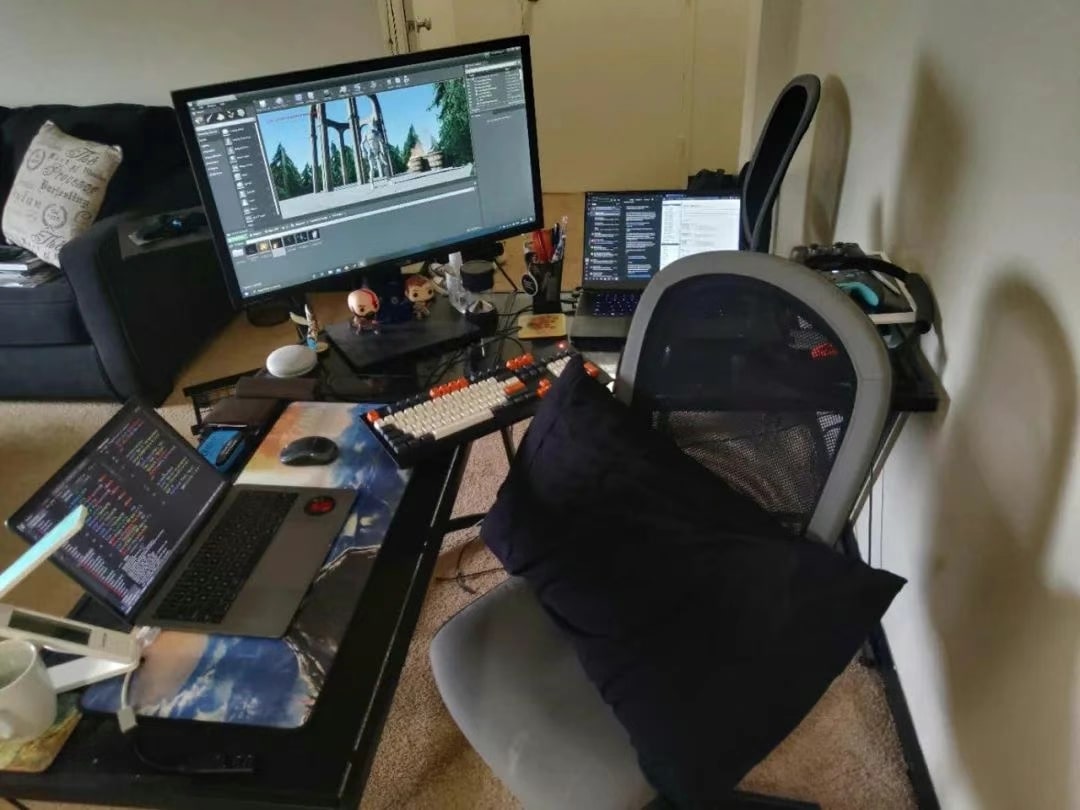A Small Desk, A Big Blind Spot
April 12, 2020
A reflection on how a simple desk layout change revealed the hidden cost of subconscious mental limits.
I suddenly realized how dangerous the limits of our thinking can be.
I have an L‑shaped desk. Because two displays wouldn’t fit side‑by‑side on one surface, I kept an external monitor on one wing and my MacBook on the other. That meant I only plugged into the 4K monitor when I needed the resolution—and I could never use dual screens at the same time.
A few days ago it hit me: why not put the monitor on that quarter‑circle corner?
Once I did, everything clicked. I can use two screens at once—and even run two computers side by side. After setting it up, my productivity felt maxed out.
But then a question: I’ve owned this monitor for nearly a year. Why did it take me this long to think of it?
Looking back, I think it’s because every desk I’ve ever used was rectangular. I’d never worked with a quarter‑circle surface. In my subconscious, that curved section didn’t “count” as usable workspace. My thinking was boxed in by the assumption that only rectangles are “real” working areas—so I treated that corner as storage, not a tool.
On a personal level, not having dual screens cost me time—endless app‑switching. At the company or industry level, what happens when this kind of mental constraint scales up?
